
Oasis montaj: how to improve your understanding of an exploration project with magnetic data
Using open-source Geoscience data, we will illustrate how Oasis montaj can improve your understanding of an exploration project. This demonstartion will highlight some of the

Technical Tuesday: Learn Kriging Neighbourhood Analysis with Leapfrog Edge
With Leapfrog Edge, KNA can be run on multiple parent blocks within a domain, improving the confidence of the global parameters you have chosen. It
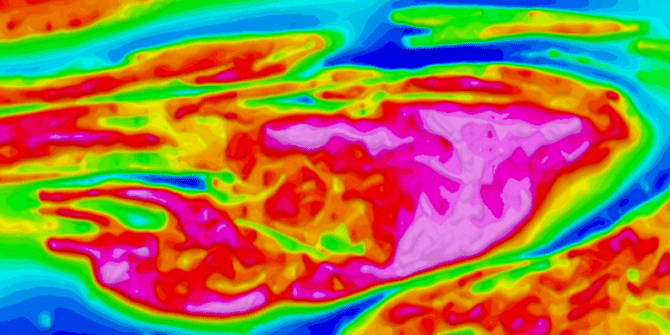
Multi-Trend Gridding for Geophysical data
We’re always looking for better ways to help you visualise your data and our brand new gridding algorithm, Multi-Trend Gridding, is specifically designed for interpolation
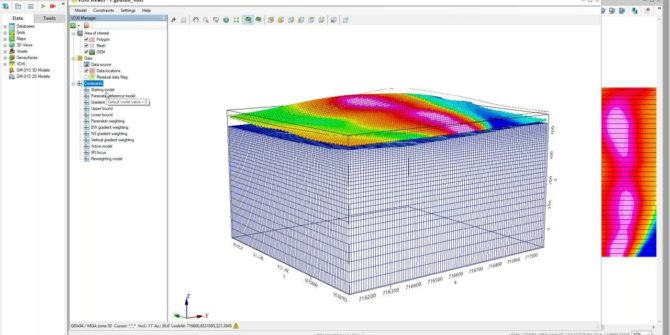
VOXI: constrained modeling (Remote Roundup 2021)
Start with the basics, and build up to Geologically constrained model. Overview SpeakersKanita Khaled Geophysicist - SeequentDuration30 minJTNDJTIxLS0lMjBUaGUlMjBzY3JpcHQlMjB0YWclMjBzaG91bGQlMjBsaXZlJTIwaW4lMjB0aGUlMjBoZWFkJTIwb2YlMjB5b3VyJTIwcGFnZSUyMGlmJTIwYXQlMjBhbGwlMjBwb3NzaWJsZSUyMC0tJTNFJTBBJTNDc2NyaXB0JTIwdHlwZSUzRCUyMnRleHQlMkZqYXZhc2NyaXB0JTIyJTIwYXN5bmMlMjBzcmMlM0QlMjJodHRwcyUzQSUyRiUyRnBsYXkudmlkeWFyZC5jb20lMkZlbWJlZCUyRnY0LmpzJTIyJTNFJTNDJTJGc2NyaXB0JTNFJTBBJTBBJTNDJTIxLS0lMjBQdXQlMjB0aGlzJTIwd2hlcmV2ZXIlMjB5b3UlMjB3b3VsZCUyMGxpa2UlMjB5b3VyJTIwcGxheWVyJTIwdG8lMjBhcHBlYXIlMjAtLSUzRSUwQSUzQ2ltZyUwQSUyMCUyMHN0eWxlJTNEJTIyd2lkdGglM0ElMjAxMDAlMjUlM0IlMjBtYXJnaW4lM0ElMjBhdXRvJTNCJTIwZGlzcGxheSUzQSUyMGJsb2NrJTNCJTIyJTBBJTIwJTIwY2xhc3MlM0QlMjJ2aWR5YXJkLXBsYXllci1lbWJlZCUyMiUwQSUyMCUyMHNyYyUzRCUyMmh0dHBzJTNBJTJGJTJGcGxheS52aWR5YXJkLmNvbSUyRkJVWHJHTk0zUVpDUjdBWkg2cm9US2YuanBnJTIyJTBBJTIwJTIwZGF0YS11dWlkJTNEJTIyQlVYckdOTTNRWkNSN0FaSDZyb1RLZiUyMiUwQSUyMCUyMGRhdGEtdiUzRCUyMjQlMjIlMEElMjAlMjBkYXRhLXR5cGUlM0QlMjJpbmxpbmUlMjIlMEElMkYlM0UlMEE= Video Transcript [00:00:00.611] (relaxing music) [00:00:11.185] <v
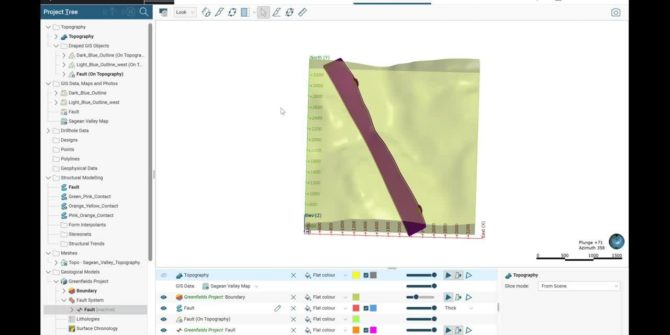
Modeling with no drillholes (Remote Roundup 2021)
Leapfrog Geo allows you to easily construct geological models from any input data. In this demo, we’ll build a model from a geological map, some
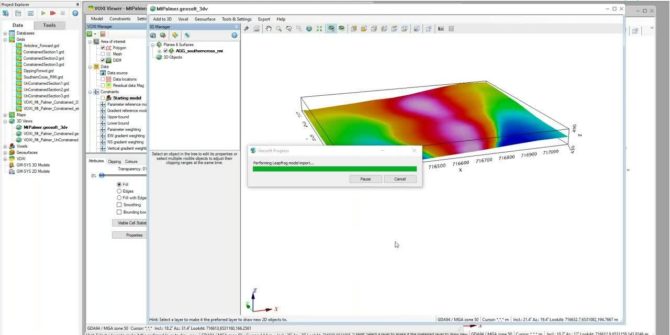
Oasis montaj & Leapfrog Geo: interoperability workflows (Remote Roundup 2021)
Come see data exchange workflows and how to collaborate and share your Geophysical and Geological modelling efforts. Overview SpeakersGeoff Plastow Senior Geophysicist - SeequentDuration23 minJTNDJTIxLS0lMjBUaGUlMjBzY3JpcHQlMjB0YWclMjBzaG91bGQlMjBsaXZlJTIwaW4lMjB0aGUlMjBoZWFkJTIwb2YlMjB5b3VyJTIwcGFnZSUyMGlmJTIwYXQlMjBhbGwlMjBwb3NzaWJsZSUyMC0tJTNFJTNDc2NyaXB0JTIwdHlwZSUzRCUyMnRleHQlMkZqYXZhc2NyaXB0JTIyJTIwYXN5bmMlMjBzcmMlM0QlMjJodHRwcyUzQSUyRiUyRnBsYXkudmlkeWFyZC5jb20lMkZlbWJlZCUyRnY0LmpzJTIyJTNFJTNDJTJGc2NyaXB0JTNFJTNDJTIxLS0lMjBQdXQlMjB0aGlzJTIwd2hlcmV2ZXIlMjB5b3UlMjB3b3VsZCUyMGxpa2UlMjB5b3VyJTIwcGxheWVyJTIwdG8lMjBhcHBlYXIlMjAtLSUzRSUzQ2ltZyUyMCUyMHN0eWxlJTNEJTIyd2lkdGglM0ElMjAxMDAlMjUlM0IlMjBtYXJnaW4lM0ElMjBhdXRvJTNCJTIwZGlzcGxheSUzQSUyMGJsb2NrJTNCJTIyJTIwJTIwY2xhc3MlM0QlMjJ2aWR5YXJkLXBsYXllci1lbWJlZCUyMiUyMCUyMHNyYyUzRCUyMmh0dHBzJTNBJTJGJTJGcGxheS52aWR5YXJkLmNvbSUyRkVtWWRDZEhYUXZVeHhQcXlOMm1rOWMuanBnJTIyJTIwJTIwZGF0YS11dWlkJTNEJTIyRW1ZZENkSFhRdlV4eFBxeU4ybWs5YyUyMiUyMCUyMGRhdGEtdiUzRCUyMjQlMjIlMjAlMjBkYXRhLXR5cGUlM0QlMjJpbmxpbmUlMjIlMkYlM0UlMEE=

Introduction to Central and 4.0 New Features (Remote Roundup 2021)
Join us to see how Central can improve your workflows today! Overview SpeakersStephen Donovan Central Technical Specialist - SeequentDuration18 minJTNDJTIxLS0lMjBUaGUlMjBzY3JpcHQlMjB0YWclMjBzaG91bGQlMjBsaXZlJTIwaW4lMjB0aGUlMjBoZWFkJTIwb2YlMjB5b3VyJTIwcGFnZSUyMGlmJTIwYXQlMjBhbGwlMjBwb3NzaWJsZSUyMC0tJTNFJTNDc2NyaXB0JTIwdHlwZSUzRCUyMnRleHQlMkZqYXZhc2NyaXB0JTIyJTIwYXN5bmMlMjBzcmMlM0QlMjJodHRwcyUzQSUyRiUyRnBsYXkudmlkeWFyZC5jb20lMkZlbWJlZCUyRnY0LmpzJTIyJTNFJTNDJTJGc2NyaXB0JTNFJTNDJTIxLS0lMjBQdXQlMjB0aGlzJTIwd2hlcmV2ZXIlMjB5b3UlMjB3b3VsZCUyMGxpa2UlMjB5b3VyJTIwcGxheWVyJTIwdG8lMjBhcHBlYXIlMjAtLSUzRSUzQ2ltZyUyMCUyMHN0eWxlJTNEJTIyd2lkdGglM0ElMjAxMDAlMjUlM0IlMjBtYXJnaW4lM0ElMjBhdXRvJTNCJTIwZGlzcGxheSUzQSUyMGJsb2NrJTNCJTIyJTIwJTIwY2xhc3MlM0QlMjJ2aWR5YXJkLXBsYXllci1lbWJlZCUyMiUyMCUyMHNyYyUzRCUyMmh0dHBzJTNBJTJGJTJGcGxheS52aWR5YXJkLmNvbSUyRnZQbjhIaTQ0YW5vMWl3U0Fnb3Nya1QuanBnJTIyJTIwJTIwZGF0YS11dWlkJTNEJTIydlBuOEhpNDRhbm8xaXdTQWdvc3JrVCUyMiUyMCUyMGRhdGEtdiUzRCUyMjQlMjIlMjAlMjBkYXRhLXR5cGUlM0QlMjJpbmxpbmUlMjIlMkYlM0U= Video Transcript [00:00:00.566] (upbeat music)
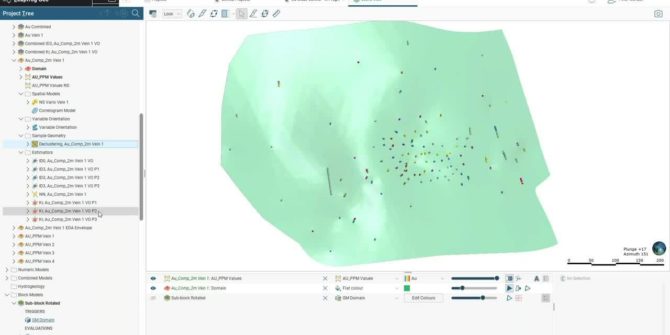
Introduction to Leapfrog Edge, a dynamic grade thickness workflow (Remote Roundup 2021)
Overview SpeakersPeter Oshust Senior Geologist Business Development - Seequent Duration39 minJTNDJTIxLS0lMjBUaGUlMjBzY3JpcHQlMjB0YWclMjBzaG91bGQlMjBsaXZlJTIwaW4lMjB0aGUlMjBoZWFkJTIwb2YlMjB5b3VyJTIwcGFnZSUyMGlmJTIwYXQlMjBhbGwlMjBwb3NzaWJsZSUyMC0tJTNFJTNDc2NyaXB0JTIwdHlwZSUzRCUyMnRleHQlMkZqYXZhc2NyaXB0JTIyJTIwYXN5bmMlMjBzcmMlM0QlMjJodHRwcyUzQSUyRiUyRnBsYXkudmlkeWFyZC5jb20lMkZlbWJlZCUyRnY0LmpzJTIyJTNFJTNDJTJGc2NyaXB0JTNFJTNDJTIxLS0lMjBQJTBBdXQlMjB0aGlzJTIwd2hlcmV2ZXIlMjB5b3UlMjB3b3VsZCUyMGxpa2UlMjB5b3VyJTIwcGxheWVyJTIwdG8lMjBhcHBlYXIlMjAtLSUzRSUzQ2ltZyUyMCUyMHN0eWxlJTNEJTIyd2lkdGglM0ElMjAxMDAlMjUlM0IlMjBtYXJnaW4lM0ElMjBhdXRvJTNCJTIwZGlzcGxheSUzQSUyMGJsb2NrJTNCJTIyJTIwJTBBJTIwY2xhc3MlM0QlMjJ2aWR5YXJkLXBsYXllci1lbWJlZCUyMiUyMCUyMCUwQXNyYyUzRCUyMmh0dHBzJTNBJTJGJTJGcGxheS52aWR5YXJkLmNvbSUyRlRLbW9LVlR2UzR2VFc5N2NNa0dBSnguanBnJTIyJTIwJTIwZGF0YS11dWlkJTNEJTIyVEttb0tWVHZTNHZUVzk3Y01rR0FKeCUyMiUyMCUyMGRhdGEtdiUzRCUyMjQlMjIlMjAlMjBkYXRhLXR5cGUlM0QlMjJpbmxpbmUlMjIlMkYlM0U= Video Transcript [00:00:00.899] (gentle music) [00:00:10.870] <v Peter>Good morning or good afternoon everyone</v> [00:00:14.078]




